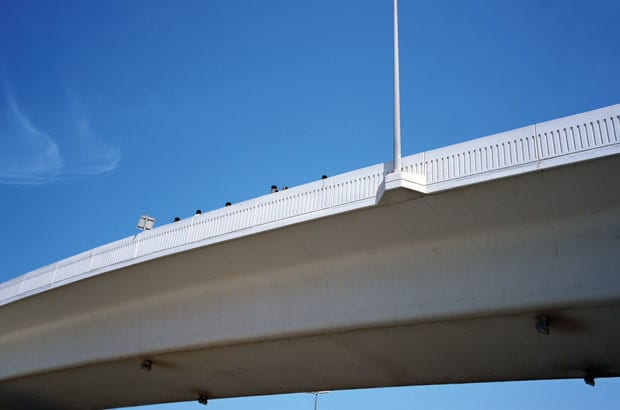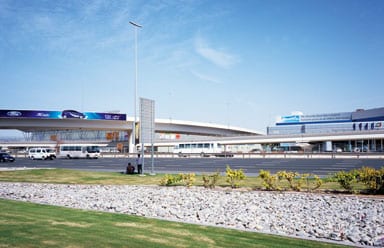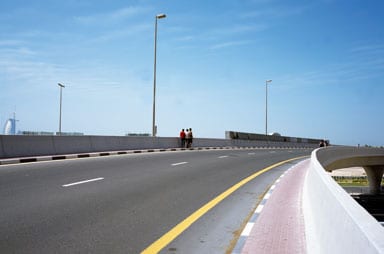
words William Wiles
Always Let The Road Decide is a project by British photographer David Kendall that studies the movements of migrant workers in Dubai. The Persian Gulf city-state has attracted international criticism in recent years for its treatment of the impoverished south Indian guest workers that build its boom-fuelled megaprojects. Kendall visited as part of a group of architects studying migrant worker housing – but he became interested in how the workers were travelling around the precocious emirate.
“The city isn’t really designed for people to walk around,” says Kendall. “I became fascinated with the idea of how the roads became barriers. If you want to cross these roads you have to walk a hell of a long distance.” Dubai’s breakneck pace of development has left miles of new freeways, but little in the way of footbridges or pavements. This is no problem for Emiratis and Western visitors, who travel by car, but cars and taxis are beyond the means of the migrants, and public transport is underdeveloped.
All the photos include migrant workers, often dwarfed by the automobile infrastructure they are attempting to use on foot. Conditions for pedestrians are hostile. “It’s very very hot, very dusty, very high pollution levels, there’s no pavement,” Kendall says. “It’s like a motorway in the UK, you’re not supposed to walk down the edge of these roads.”
The men in the pictures aren’t going to work – employers generally bus them to and from their workplace. Instead, they’re going to the beach or to visit friends on their one day off, and there’s no provision for that. “That’s what drew me to it,” says Kendall. “It’s the activities they do outside of work.”
The irony is that tourism is a keystone of Dubai’s ambition to become a regional hub. From the point of view of wealthy visitors from the West and Asia, much of the city is literally built for leisure. For the workers, however, the city is built for work, and to relax they have to take their chances on the roads.
“It’s this idea of islands within cities, separated, and different people living in different parts and not coming together with anyone else,” Kendall says. “Part of the research is developing towards the idea of how tourists and migrant workers might interact in formal ways.”



















